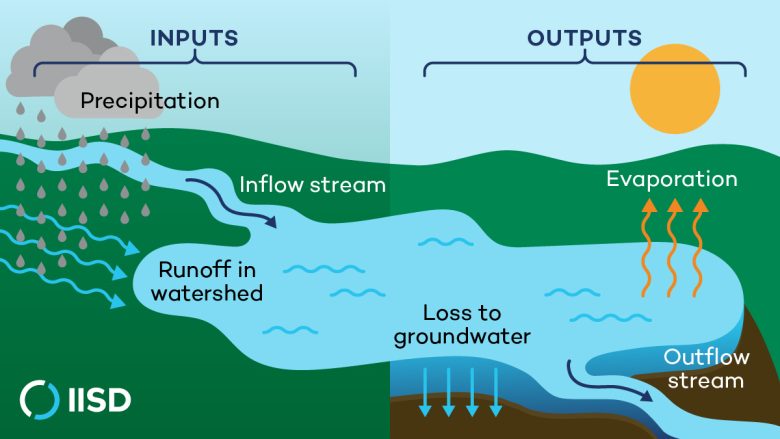Back to Basics September 20, 2022
BACK TO BASICS: What is the water cycle?
By Savana Theodore-Maraj, Education & Outreach Assistant
Water is a critical part of our lives. While it is essential for maintaining life, we can also use it in its various states and forms recreationally. In short, everyone has a strong connection to water.
But where and how does water get to us? And where does it come from?
Let’s get back to basics and talk about…the water cycle!
The water cycle
Water constantly moves through the environment in a cycle and, along the way, can be found in various states and forms. You may encounter these different forms in your everyday life. Think, rainwater, fresh water in lakes, rivers, ponds and streams, fog or mist, ice or glaciers, snow—even water in the ground! Although there are many different forms of water, water itself is usually found in one of the three main states: liquid, vapor (gas) and solid. These three forms have specific roles in the main steps of the water cycle which are evaporation, condensation, and precipitation.
Evaporation: The liquid surface of water absorbs energy, and water molecules move away from each other until liquid water turns into water vapor. In the water cycle, this happens when liquid water heats up from the sun.
Condensation: Water vapor in the atmosphere cools down and the molecules come together and to form a liquid. This happens when the warm humid air meets cold air or a cold object. Clouds and fog are created through this process, as are the dew droplets that you may see on grass and plants on an early summer morning.
Precipitation: The liquid (sometimes solid) water falls from the sky to the Earth in the form of rain, snow, or hail.
There is more to the process besides those three steps. In-between steps of the water cycle include runoff, transpiration, and sublimation. Water can also be found as groundwater which is made possible through the processes of infiltration (water entering the ground from the surface) and percolation (gravity pulling water deeper into the ground). Groundwater also flows into streams and cools the temperature of the streams during dry periods.
Runoff: When excessive liquid water cannot be absorbed into the ground it moves across the land. During the spring snow begins to melt from solid to liquid form. The water then runs off the land into nearby water bodies. Since water is a powerful solvent, runoff can also bring pollution and other contaminants off of the landscape and into water systems. When there are major storm systems that bring large amounts of precipitation wastewater treatment plants can become flooded which means raw or diluted sewage gets dumped into nearby water bodies (often rivers).
Transpiration: water that evaporates from plants into the atmosphere. Extra water that plants take up through their roots and don’t use exits through pores in the leaves called stomata.
Sublimation: In very cold, dry conditions, when the sun is shining on ice and snow, and especially if there are high winds, ice and snow can turn directly into a gas state.
This is where we come in
Here at the world’s freshwater laboratory, there are a few ways we have been working with and trying to understand how human activity can impact the water cycle.
The first is through limnology. Limnologists help us understand fresh water and the cycle of water. From understanding the inflows and outflows of lakes to the chemical makeup of a lake and all the things we find inside of them. Studying effects on lakes means understanding different parts and processes of the water cycle. Monitoring our lakes in real time also helps with understanding the water cycle and thus impacts to fresh water. We also monitor other weather-related measurements that affect the water cycle, including air temperature, wind speed, and relative humidity, at our meteorological site.
The water cycle contributes to our way of living every day. It influences many other cycles, such as carbon and phosphorous cycles, as well as processes affecting climate. Water plays a major role in extreme weather events such as droughts and floods. A changing climate means water-related extreme events are becoming less predictable and can happen more frequently and severely. An experiment begun in 2010 at IISD-ELA altered the amount of water flowing into a lake to mimic the effects of climate change—more specifically, a drought scenario. This study is important in knowing how climate change could impact factors and processes of the water cycle on lake ecosystems such as how long water stays in a lake.

It is important to understand these impacts and changes to fresh water and more broadly the water cycle so that we can educate, share, and transform water policies locally and globally. Water has a valuable role in our lives and it is vital that we are learning and doing what we can to ensure its protection.